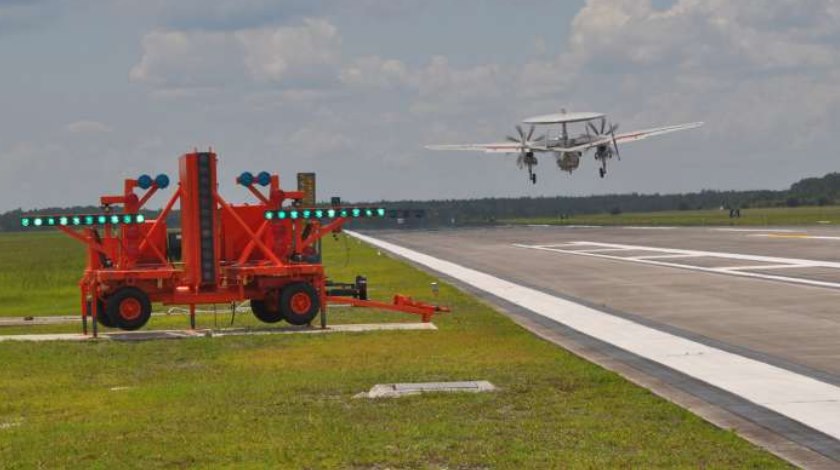Photo: jacksonville.com
Reading Time: 2 minutesOutlying Landing Field (OLF) Whitehouse recently reopened after being closed for nine months, while receiving equipment upgrades.
New power supplies to the fire department, new electrical vault and conduit, new landing signal officer (LSO) trailers built specifically for use at OLF, and a new touchscreen light control system in the control tower are just a few of the improvements made. Whitehouse is used not only by local units, but also by squadrons from NAS Whidbey Island, Wash., as well as training squadrons from Virginia, Florida and Texas.
“Whitehouse is one only two lighted, simulated carrier decks on east coast,” said Deputy Airfield Manager Winston Rogers.
“Now that we are open again, I anticipate there will be a lot more training flights out here.”
OLF Whitehouse is a critical asset for naval air training prior to carrier deployment, serving Naval Air Station Jacksonville, as well as visiting detachments from other installations in the region. OLF Whitehouse provides the necessary dark-night environment that simulates at-sea carrier landings, allowing air crews to replicate the exact landing patterns used on the carrier.
Its close proximity to Atlantic Ocean carrier-operating areas reduces transit time and operating costs for fixed-wing jet, helicopter and special warfare training.
The Navy has been unable to replicate the important training capabilities provided by OLF Whitehouse anywhere else along the East Coast.
T-45 Goshawks took off from Cecil Airport March 15 to practice “bouncing” at OLF Whitehouse. The Goshawks belong to Training Squadron (VT) 21 and Training Squadron (VT) 22 at NAS Kingsville, Texas, and this was a practice the day before an initial carrier qualification for the pilots.
“This is such a great area and I’m very impressed with the facilities,” said Lt. Brett Learner, who served as one of the LSOs.
For the pilots, this was their first opportunity to get their field carrier landing practice (FCLP). The T-45s arrived with four aircraft in a formation before splitting off and taking turns touching down on the runway, which is a mockup of an aircraft carrier flight deck. As they approach the runway, lights direct the pilots whether they are in the correct position to land.
After a quick touchdown, they are back in the air and continue to rotate. The LSOs judge the pilots on their approach and landing to assist them in their training.
According to LSO Lt. Brandon Hempler, the next day the Goshawks would be actually landing on the USS George Washington, about 100 miles off the coast of Florida.
The day before, Helicopter Maritime Strike Squadron (HSM) 40 “Airwolves” from Naval Station Mayport practiced “rocks and blocks” otherwise known as sling load training at OLF Whitehouse.
Their practice includes lifting items and dropping them on a target called confined area landings, using an MH-60 Romeo helicopter. The pilots approached test patterns from every direction to the landing area.
“Due to construction at both NAS Jacksonville and NS Mayport, vertical replenishment (VERTREP) training has been restricted to other locations; Whitehouse was the next best option.
“The purpose of Monday’s flight was to test the newly designated VERTREP area in preparation for other helicopter squadrons to conduct VERTREP refresher training,” said HSM-40 Operations Officer Lt. Cmdr. Kevin Lucas.

